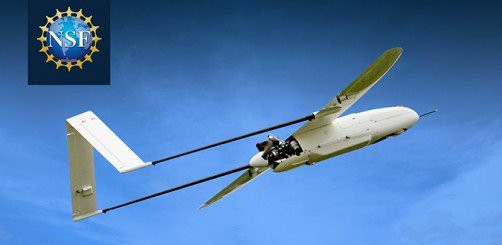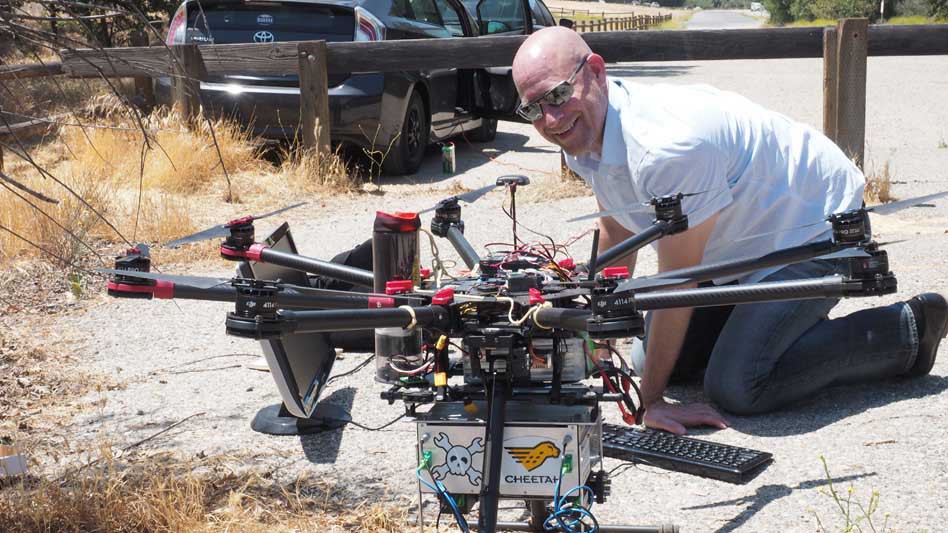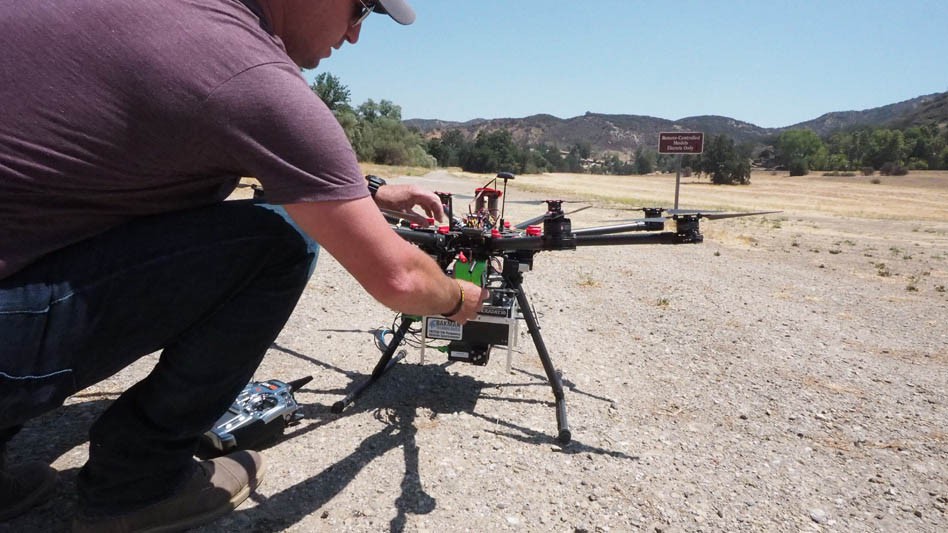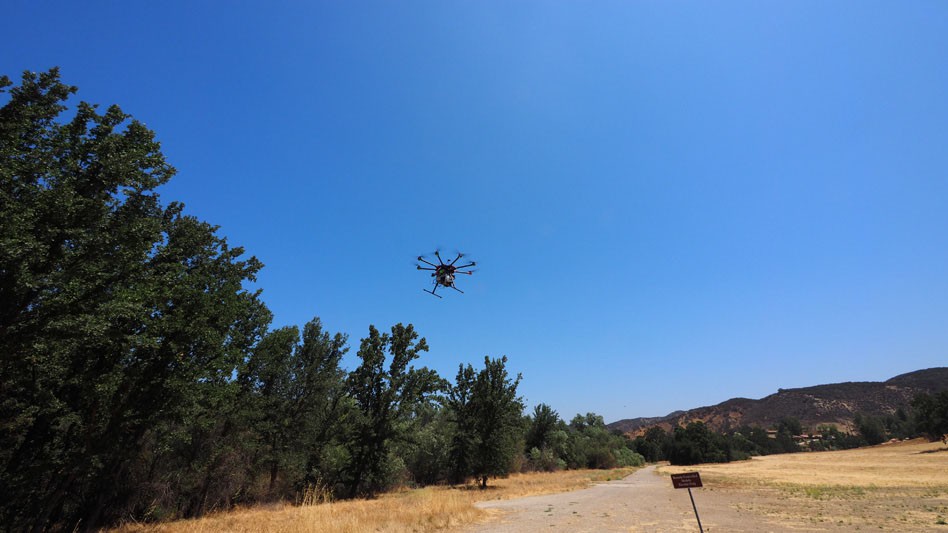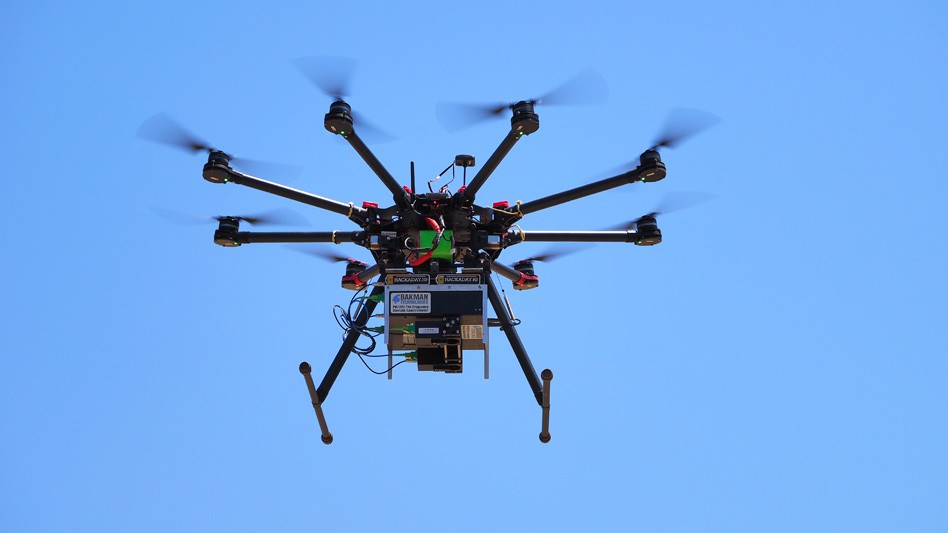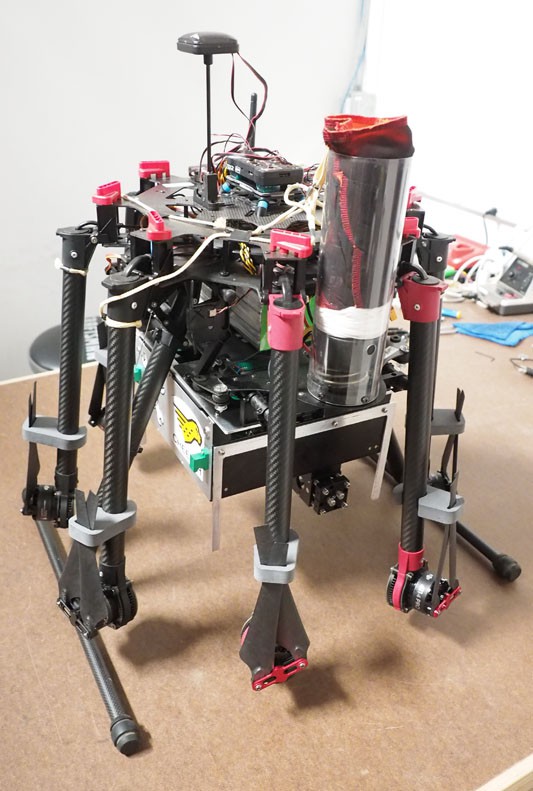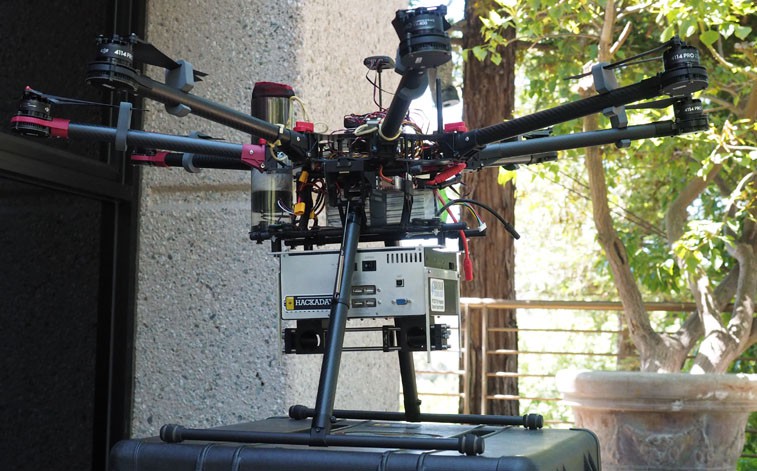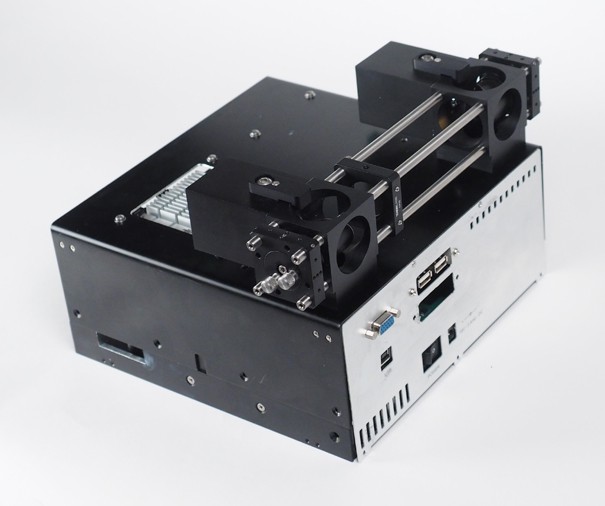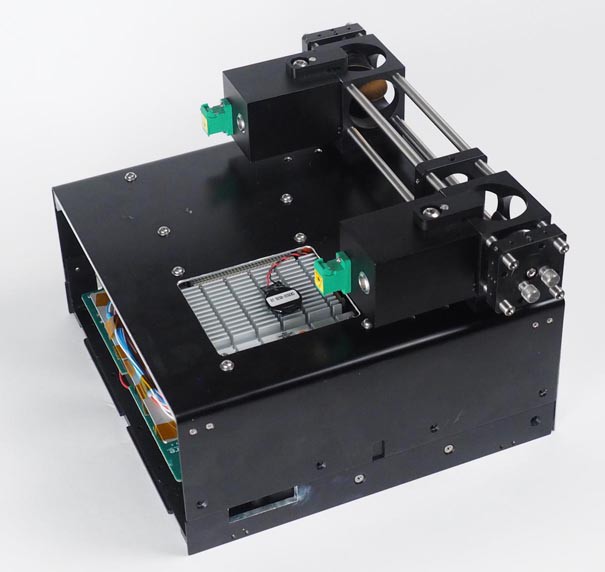-
Phase II National Science Foundation Grant Recipient!
11/23/2018 at 19:19 • 0 comments![]()
What a ride this has been. First, the maiden flight on July 3rd, 2016 went well (see THz Takes Flight), then Bakman Technologies won a $225k Phase I NSF grant, next the results were published in IEEE Sensors Letters and we gave a talk at Photonics West 2018. Now we were just awarded a two year Phase II NSF Grant for $725k to continue our development of A Spectroscopic THz Sensor for Mixed Gas Analysis and Air Pollution Monitoring. Wow! I never thought this would happen.
The reason that THz spectroscopy is finding legs in this application is because it is a useful tool for gas analysis. Rotational transitions for a variety of molecules occur in this frequency domain and these transitions are specific to each molecule. When the gas is illuminated with THz radiation, the rotational transitions show up as absorptions at very specific frequencies. Under the right conditions the absorptions may be used to measure the presence and concentration of different molecules in a gas sample. Another great thing is that THz spectroscopy is not gas specific, it can detect the different contaminants simultaneously.
Over the next two years I will be working on proving that the new system that is designed for the UAV application will have the sensitivities that are required for doing ppm detection of different sulfur containing pollutants. This is the goal.... and it is gonna be a tough one. If any of you with firmware and programing experience are in the Van Nuys area looking for work then reach out to me - I could use some help! I need someone local though because it is hardware based work.
I would like to thank everyone who helped or even offered to help.
-
We Won a National Science Foundation Grant!
10/29/2017 at 02:50 • 0 commentsI started The THz Drone Project on Hackaday in order to document what I thought would be a great project. While the goal of building a drone mounted THz spectrometer capable of performing in-situ gas analysis that could discriminate between different pollutants was not technically possible, I could show that flying a THz spectrometer was. This effort was rewarded this year in August (2017) when Bakman Technologies was awarded a $225,000National Science Foundation grant to further develop our THz technology and make the goal of pollution monitoring and gas sensing possible.
So great things come from little beginnings. Do your hack, dream your dream and keep pushing. Not even the sky is the limit :-)
-
Future Hacking
09/18/2016 at 19:14 • 0 commentsThis has been a very successful project for illustrating the potential utility of a drone mounted THz spectrometer. The response to this project has been very positive. Thanks to everyone who showed interest or contributed. I have already received inquiries if the THz Drone is ready to start making atmospheric measurements of pollutants. The answer is, unfortunately, "No, not yet." There are several things that are required before the THz Drone can get out there and start spot checking local pollutant levels and enforcing pollution laws. As it turns out, the upgrades necessary are going to be an even greater Hack than what has been done so far.
Thanks for reading!
-
Current Status
09/18/2016 at 17:46 • 0 commentsFor the last couple of months I have been working on organizing all of the video documentation that I compiled during the course of the THz Drone project. After doing that I set out to find a videographer with some drone experience. I took me some time to find someone, but I did. The videos are being pulled together and I should be able to post them before the end of September. The videos aren't just documentation, but also include discussions on how the THz technology works and why it is so important to take this Hack to the next step.
-
Yes, it was humid.
07/04/2016 at 21:52 • 0 commentsWe were flying the THz Drone at Paramont Ranch Park in the Santa Monica Mountains. They have an area set aside for flying drones. Earlier in the day there had been fog in the area, but by the time we had arrived the fog had burned off leaving it extremely hot and humid. The reported weather showed the humidity for the day varying between 96% and 45% with an average of about 75% and a high of 90 degrees.That water vapor lines are certainly extremely strong.
![]()
Unfortunately, I hadn't gotten the humidity meter working yet. It was supposed to be attached to the drone to record the humidity while the spectra was being recorded. Since this was the maiden voyage and I thought this area was going to be very, very dry I hadn't concentrated on getting the humidity probe working.
-
THz Takes Flight
07/02/2016 at 00:53 • 0 commentsToday, Edan (from Cheetah Logistics) and I flew a test flight of the PB7220-2000-T THz Spectrometer on a DJI-S1000. We simply wanted to see how it would go and how long we could fly. As it turns out we could stay airborn 8.5 minutes. The spectrometer weighed-in at 3.5 kg, so I obviously still need to shed some more weight to get longer flight times. The spectrometer was running during the flight and it was very hot and humid so we recorded some nice water vapor transitions at twenty feet in the air.
![]()
Next time I need to bring a table and some shade.
![]()
![]()
Kinda surprised it worked the first time without a hitch specially on our budget....
![]()
I will post the data when I download it from the drone. Right now I just want to celebrate the fact that it actually worked!
Happy 4th of July!
-
IT FITS!!
06/25/2016 at 22:27 • 0 commentsYesterday I went to Cheetah Logistics in Westlake Village to try and fit the THz spectrometer on one of their DJI-S1000 and much to everyone's surprise it fit perfectly!!!
![]()
Even with the landing gear down it cleared! Even with the THz spectrometer attached it can be put into the standard traveling case. Given that the adapting plates were developed off of a picture of the mounting points with a ruler laid next to them made it somewhat astounding. And the center of mass seems to be aligned very, very well. The parachute on the DJI-S1000 seems to cause more of an off balance situation (but we are not getting rid of it). And the unit is low enough such that the landing gear just clears the enclosure (talking a millimeter here). It is fairly impressive with the arms out.
![]()
So what is next? We are going to do more work with the spectrometer and get it running and start taking some data to see how long it will operate with the new, smaller battery. We could run the system from the battery on the drone, but for now, we will continue to employ the internal battery.
-
Back to Windows 7
06/15/2016 at 19:21 • 0 commentsSo I made a couple of changes to what I was planning.
First - I ended up having to relocate the battery to be more in the middle of the spectrometer and I switched to a smaller battery with half the cells and capacity. I will have to see how long the system will operate on this battery.
Second - Windows 10, for whatever reason, doesn't work well on this SBC. When I had Windows 7 installed it ran much faster. I am switching back to Windows 7. I will not share my comments and what I think about Windows 10 in this public forum. Yes, it would be nice to make the spectrometer OS independent. That was always the goal. Just haven't had the programming resources :-(
Third - I bought a USB humidity sensor that I will attach to the system. I will try and make both THz readings and humidity sensor readings at the same time. This way I will be able to correlate the two measurements. Some of you may ask "If you can just buy a USB humidity sensor, why strap a THz spectrometer to a drone to measure water vapor content?" We are doing this as a demonstration and test. The real end goal of the THz spectrometer is to measure and classify many different gases, not just water vapor.
-
Moving the battery
06/01/2016 at 23:00 • 0 commentsToday my 2mm taps came in so I will be able to tap the holes that were somehow missed when the chassis was made. While I was looking at the modified PB7220 I realized that with the heads and the battery all on the same side that the weight was going to be really off centered. I would have liked to put the THz optics on the other side to balance things out but then the cables will not clear the SBC..... So, I moved the THz optics more towards the center of the unit and I am going to try and move the battery more towards the center as well.
-
Almost back together
05/29/2016 at 22:27 • 0 commentsFrom the pictures you can see how close I got to actually getting the PB7220 back together.
![]()
![]()
It is possible to connect the SBC computer to a monitor a keyboard and the PB7220 and it fires up, the software works, it runs off of battery - everything is great! Except I can't connect the heads to the unit with the fibers and electrical tethers. The small threaded holes that hold the end plates to the chassis were never tapped. They should be tapped with a M2 x .4 thread but the aren't. If it weren't for this then this thing would be taking data at this point. Instead, I had to order some taps and a tap holder and hope that I don't break a tap!
On the next log I will have this thing together and taking some water vapor data here in the laboratory. In the meantime, Thomas designed an aluminum bracket to allow us to attach the system to the drone and I am designing a stand that will allow the unit to be turned upside down and set on a table.
The THz Drone Project
I am working on a project to fly a THz Spectrometer on a drone. This will enable spot measurements of important atmospheric molecules.
 Joseph Demers
Joseph Demers